Australia
Scenic Routes: Taking A Moment To Look Around When Driving
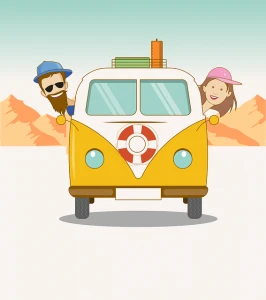
Recently, we flew into Sydney and had need to spend a few days to catch up with family. As we were staying in northern Sydney for a few days, we had some time between gatherings to get out and about and enjoy the sights. One of the days, we had to drive from Glenhaven up to the Hunter Valley, which is situated well north of Sydney towards Newcastle (as some of you know if you happen to live there). Wow, the Hunter Valley is a stunning place showcasing some stunning skyscapes and rolling hills around Cessnock.
Before we set off to our northern destination, we dialled up the best route with no tolls to pay on Google Maps. To our delight, we were sent on a beautiful drive through Galston Gorge. Except for a brief excursion into the Blue Mountains, up to this point we had only been travelling within Sydney itself and had little experience of any roads travelled less by the general public. This little beauty, which only kept us off the Pacific Motorway for 45 minutes or so, took us through an amazing forest with a few narrow bridges that had us skipping over steep ravines with little streams well below. Some of the turns in the road had to be taken at 5 km/h, such was the sharpness of the change in angle and the steep terrain. What a magical experience, and all of this just moments from Sydney’s urban hustle.
Another special part of the trip involved our brief look at the Blue Mountains National Park, where we travelled on the main route through Bullaburra and out to Wentworth Falls. Here we went for a decently lengthy couple of walks, one of which had us being awed by the beauty of the natural waterfalls. Some other great views of the Blue Mountains occurred as we were coming back on the homeward journey towards Sydney just as the sun was setting in all of its golden glory, carpeting the Blue Mountain forest canopy in a glowing yellow.
It got me to thinking of how easily some of those special moments are easily missed in the business of life. We could have chosen to stay in Sydney’s confines rather than take the trip south, and these adventures confirmed to me how I need to keep taking the time to enjoy the beautiful nature that’s around our home base, as well as going a little further afield when I travel somewhere new. Or maybe drive instead of fly, if time permits!
We don’t always have to travel long distances in our cars to find a magical experience in nature, where the birds are happily singing, the waterfall or river is still bubbling, and we can again discover that there isn’t that much wrong with the world after all – at least out here. Even inside our boxes of glass and steel with all the climate control, ambient lighting and connectivity, perhaps its time that we rediscovered what’s outside the bubble for a little bit. Take the scenic route, whether it’s suggested by Google Maps or not. Open the windows and smell the bush. Switch off the music and hear the crows and cockatoos squawking and screeching. If you’re the passenger, put the device down and indulge in an old-fashioned game of I Spy.
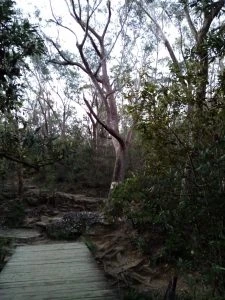
New South Wales and New Zealand: Spot The Difference
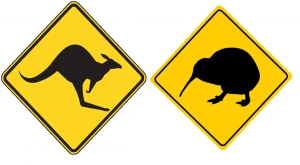
Thinking of heading across the ditch to New Zealand this winter for a spot of skiing or sightseeing, picking up a rental car so you can travel according to your own fancies? If you’re heading over from New South Wales, you’ll find that although a lot of things are the same when driving in New Zealand compared with back home, there are quite a few sneaky little differences that might trip you up. Most of the road rules and road signs will be familiar, but some aren’t and some are nonexistent. Here’s a handful of some differences you might notice:
Even in the middle of what passes for a city, there’s way less congestion. In the busiest parts of town during rush hour, you’ll get some congestion, but nothing like you’ll find in the middle of Sydney.
People don’t honk the horns half as much. OK, someone might honk if the driver at the front of the queue is naughtily on their phone or daydreaming and doesn’t notice that the light has turned green, but drivers seem more patient in, say, Christchurch than they are in Sydney and will jump on the horn a lot slower.
You don’t get handy “merge ahead” signs. Instead, you get Sign A in the diagram below. The idea is to “merge like a zip”, left-right-left-right, etc.
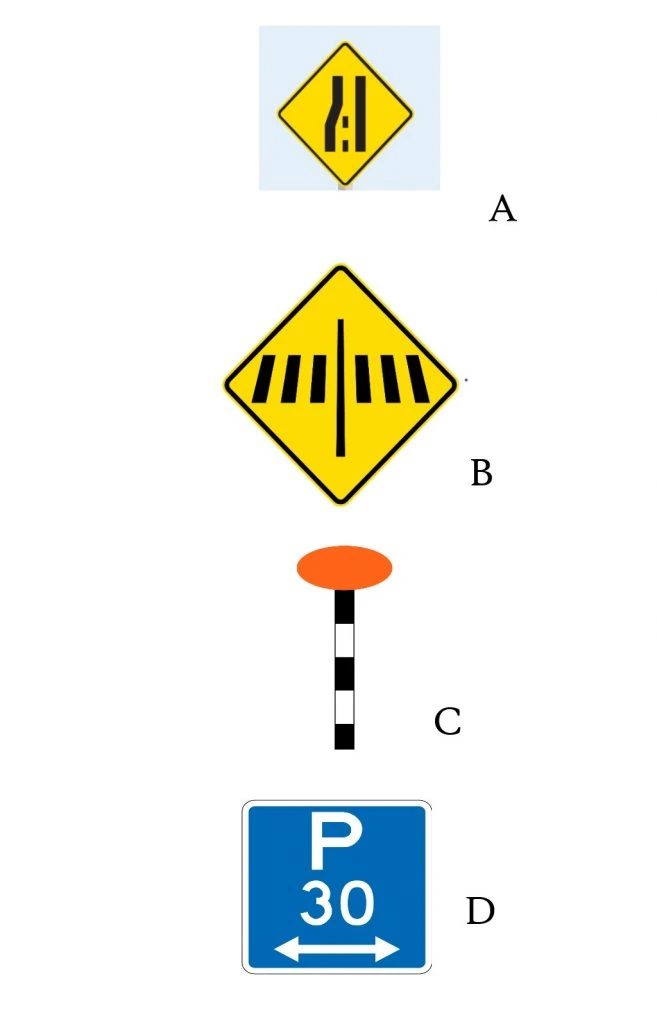
Pedestrian crossing (zebra crossing) signage is different. The familiar sign with the pair of walking legs isn’t on the zebra crossing itself, and you don’t get the zigzag road markings leading up to the crossing. Instead, you get the warning sign (Sign B), with an orange dot on a stripy pole on the crossing (Sign C).
Pedestrian refuge islands aren’t signed. This means that at any time a centre island divides two lanes of traffic, there could be a lurking pedestrian hoping to cross. Keep your eyes open (and the pedestrian will be doing the same). Refuge islands with designated cut-downs for pedestrians are common near roundabouts.
Parking limits are in minutes, not hours. If you got all excited about a sign saying “P5” or “P15”, believing that you’d be able to park there for 5 or 15 hours, I’m sorry to disappoint you. You’ve only got 5 or 15 minutes. If you’re lucky, you can find signs giving you 90, 120, 180 or 240 minutes of parking (if you look hard enough), meaning 1½ hours, 2 hours, 3 hours and 4 hours, respectively. Sign D is a typical example.
If you’re in an urban area, the speed limit is probably 50 km/h. There aren’t as many 60 km/h sections. Local traffic areas don’t exist, so assume that it’s 50 km/h unless told otherwise.
Even on the motorway, you won’t get to go 110 km/h legally. At the time of writing, the Kiwi Powers That Be are discussing the introduction of 110 km/h sections on some main motorways. However, this is still in the discussion stage, so if you head over this winter, you’ll have to keep your speed to a maximum of 100 km/h when in rural areas.
School zones don’t have the times handily displayed. If the signs are flashing, the reduced speed limit (either 30 or 40 km/h) applies; if they’re not flashing, the usual speed limit (usually 50 km/h) applies.
Speed cameras are sneaky. Permanent ones – and there are some – don’t have warning signage. There have been calls from lobby groups to introduce signs warning you that there are permanent speed cameras in position, but there aren’t any yet. You may, however, see some signs warning you about red light cameras. NZTA has taken to calling both speed cameras and red light cameras by the twee name of “safety cameras” but the majority of Kiwi think this is a cringeworthy attempt to not call a spade a ruddy spade. The NZTA Journey Planner website has a map showing you where the mobile ones are, so check this when you plan your journey (it’s a good idea to check it even if your right foot isn’t on the heavy side, as it will also tell you if roads have been closed or if there are major roadworks underway).
Witches’ hats everywhere. The roading contractors just LOVE witches’ hats and will put up heaps of them even weeks before the actual road works take place, and these will probably be the last thing they take away. They’ll also start appearing up to 1 km ahead of the road works (in rural areas). They’ll also put up insane numbers of the things. I have no idea what they’re thinking. Do they think that if there’s a car-sized gap in the middle of a long row of witches’ hats that I’m going to decide to cross the line? Incidentally, not many Kiwis will use the word “witches’ hat” but will call them a “road cone”. Near universities, you may spot some in unusual places, such as up trees.
A Rally With A Difference that Makes A Difference
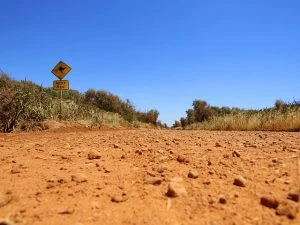
Bendigo to Pooncarie to Milparinka to Innaminka to Betoota to Isisford to Beylando Crossing and then to Townsville; now that sounds like an insane adventure! It’s an adventure just waiting for you to register, and it’s an adventure you could be on during 18th–26th October in spring 2024. Then there’s another one in autumn 2025. Are AWDs, 4WDs or any buses allowed on this rally? No, only vehicles with 2WD can be entered.
But that’s nuts! Yes, but it’s also a blast. These car rallies have been happening for quite some time now, and they were first brought into being by James Freeman. He is somewhat of a legend round these parts, as, sadly, James lost both of his parents to cancer just 12 months apart from each other. This was devastating and a really heavy burden for James to carry, as you can imagine, but James and his family nursed their parents through the last stages of their lives. In order to bounce back on top of things and to help him to make a difference, he carefully planned and instigated the first Shitbox Rally. The Shitbox Rally is a car rally that is all about having fun while raising money for cancer research.
Can I enter a new car that I buy from Private Fleet? No way! There is a $1,500 car value/budget rule, and it is the main rule that the Shitbox Rally organizers have stipulated. There are “penalties” for any cars not meeting the criteria! But yes, you can decorate your car. The crazier the decorations the better, and this is a big part of the rally’s fun. Just the bonnet and two front doors are needed for the rally sponsors’ and organiser’s stickers, so these are the areas you need to keep clear.
You do not have to have had a run in with cancer to enter the Shitbox Rally, but the truth is that many of the entrants have been affected by cancer in one way or another, whether it be from losing parents, family, or close friends from cancer; or people that they know of that have battled or are battling cancer. This car rally is all about raising awareness and money for the Cancer Council, but it is also about wanting to offer support and a friendly ear to those that have suffered or are suffering.
This sounds like my favourite sort of motorsport. This is not so much a race, but rather a challenge to achieve the unthinkable. That is to drive cars worth just $1,500 across Australia via some of its most formidable roads; and it’s all in the name of charity. I might see you there one day, as I line up in an old BYD Dolphin at the starting line of the mighty Shitbox Rally (at some point in the future, because these cars are brand new to the market at the time of writing). That might not go so well because I don’t think there’s many charging stations out there!
If you race me to the Shitbox Rally, then you’ll definitely have first bragging rights. What a blast!
Visit the official website at
https://www.shitboxrally.com.au/
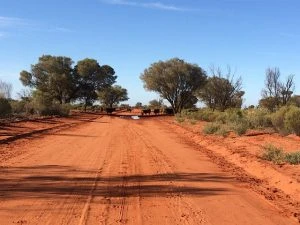
A Big Weekend At Bathurst
It was a big weekend of racing that happened at Bathurst. The 2024 Repco Bathurst 12 Hour race proved to be an eventful and exciting race, and it was a dominant performance from Matt Campbell, Ayhancan Guven, and Laurens Vanthoor who all drove faultlessly to take out the win in their yellow Manthey EMA Porsche race car, number 912.
The race was fraught with changeable weather throughout the day, meaning that a skilful pit crew needed to remain on the ball for selecting the right tyre for the driving conditions. There were numerous cars involved in crashes with or without other race cars, and against barriers that forced the teams out of the race. At multiple stages, the skies opened up, lashing down torrential rain that made driving quickly extremely risky in the wet. Throughout the day, these changing conditions made it very important for the teams’ pit crews to match up their car with the right tyre, enabling them to be set-up for successfully completing the race.
It was less than three seconds between first and second place, with team number 75 and its drivers (K. Habul, J. Gounon, and L. Stolz) guiding their SunEnergy1 Mercedes-AMG into second place. And it was less than four seconds behind the race leader and team number 22; drivers L. Talbot, K. van der Linde, and C. Haase bringing their Wash It/Jamec Team MPC Audi home for third place.
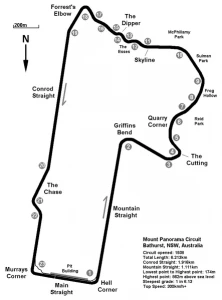
The excitement didn’t end there. Previously, in the build-up to the big race, a new closed-cockpit race record was set by Jules Gounon driving an unrestricted Mercedes-AMG GT3 car. Gounon, the three-time defending 12 Hour Bathurst race winner, clocked a 1 minute and 56.6054 second lap. Though this was an unofficial lap record (official lap records are set during racing itself), his time was quicker than the previous closed-cockpit track record (1 minute and 58.690 seconds) set in 2019 by Luke Youlden in a Brabham BT62. During this fastest lap for closed-cockpit cars, Gounon, in the Mercedes-AMG GT3, was hitting 270 km/h on Mountain Straight, 200 km/h into the Cutting, 240 km/h into McPhillamy, and 302 km/h into The Chase. This bid for a race record was part of Mercedes-AMG’s celebration of its 130th anniversary of being involved in motorsport.
And if you think that reading about it is exciting enough, try and take yourself there next year to actually watch at least some of it live. Motorsport is a lot more exciting when seen live in person, where you can feel the air shake, smell the fumes and see what those speeds actually look like as the vehicles pass you. Or if the full 12 hours of Bathurst isn’t for you, then check out another motorsport event – something that should be on every car enthusiast’s bucket list.
Or just enjoy the highlights reel: